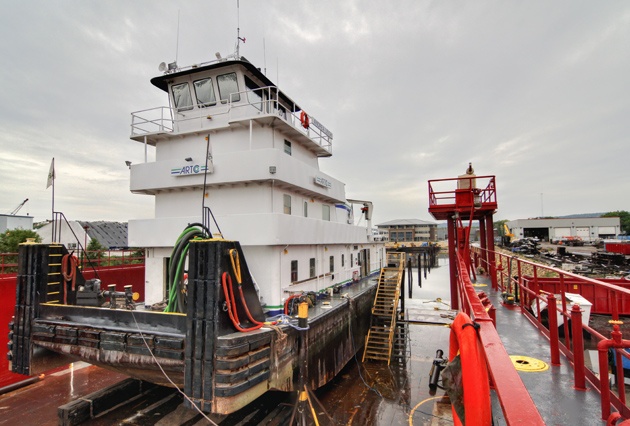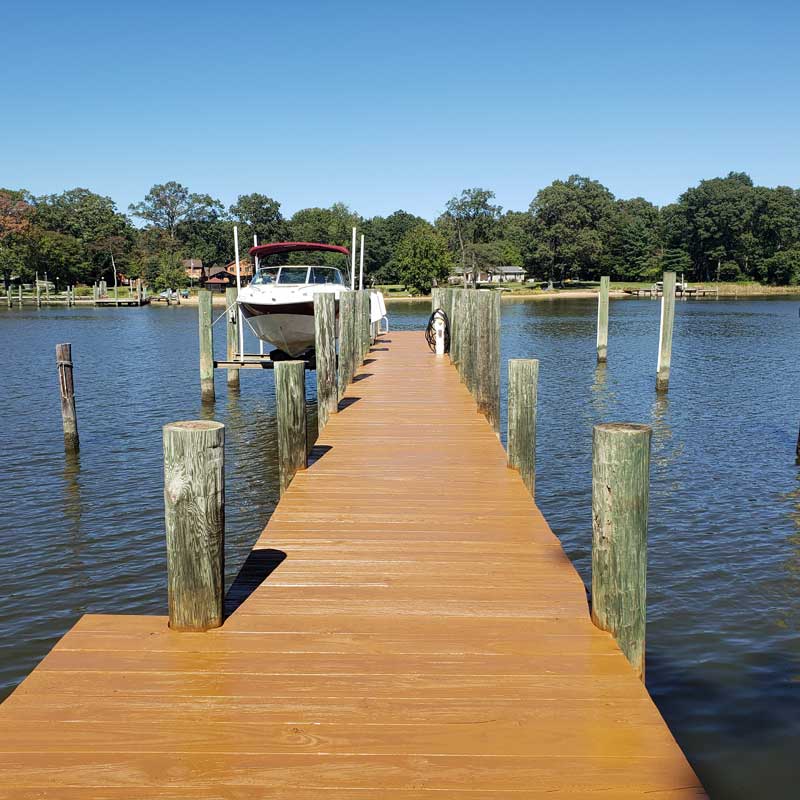DIY Tips for Simple Dock Repairs You Can Take Care Of
How to Address Common Dock Fixing Issues for Safe Water Tasks
Identifying Common Dock Issues
Recognizing usual dock issues is critical for preserving the performance and security of your waterfront residential or commercial property. Routine assessments can aid uncover problems before they become extreme, ensuring both the long life of the dock and the safety and security of those who utilize it.
Another common trouble is the degradation of flotation devices. These tools are necessary for maintaining the dock buoyant, and any kind of damage or leaks can trigger the dock to checklist or sink. Routinely examining for leakages or waterlogged floats can preempt extra substantial problems.
Additionally, algae and barnacle build-up on the dock's surface area can develop slippery and hazardous conditions. This biofouling not just postures a danger to customers yet can also accelerate the degeneration of the dock products.
Finally, inspecting for signs of rust on metal elements is necessary. Rust can compromise the integrity of the dock's framework, making it harmful. By regularly identifying these typical dock concerns, you can make certain that your dock continues to be secure and functional for many years ahead.
Repairing Rotting Timber
When resolving the concern of decaying wood on your dock, it is crucial to act quickly to avoid more wear and tear. Begin by thoroughly inspecting the whole framework to recognize all affected areas. Make use of a screwdriver to penetrate the wood; if it sinks in easily, the timber is likely decomposed and needs immediate attention.
Be sure to reduce back to healthy, strong wood, ensuring you eliminate all compromised product. After elimination, treat the staying wood with a wood chemical to protect against future rot.
Next, change the gotten rid of areas with marine-grade lumber or pressure-treated timber, which are more immune to water damages. Safeguard the new pieces with stainless-steel or galvanized bolts to stop deterioration. Additionally, applying a water-proof sealer to the new wood can provide an additional layer of security.
Safeguarding Loosened Boards
Just how do you guarantee your dock stays functional and risk-free for all its customers? One important element is securing loosened boards, which can otherwise posture significant threats. Loose boards not only boost the danger of tripping yet can additionally compromise the architectural honesty of the whole dock.

For reinstallation, utilize stainless or galvanized steel screws, as these materials offer remarkable resistance to rust in aquatic atmospheres. Make certain the screws are long enough to pass through deep into the underlying assistance structure, yet not so long that they protrude through the dock's surface area. Pre-drilling pilot holes can aid stop the wood from splitting.
Last but not least, keep a routine assessment schedule to determine and resolve any type of brand-new concerns quickly. By securing loose boards efficiently, you add to the general safety and longevity of your dock, making it a reputable platform for water tasks.
Maintaining Unstable Pilings
Making certain the security of unsteady pilings is extremely important to keeping a useful and risk-free dock. Unstable pilings can jeopardize the entire structure, posing considerable risks to users and possibly bring about expensive repair work. click this The very first step in supporting these important parts is a detailed inspection. Take a look at the pilings for indicators of rot, damage, or changing. Make use of a degree to look for upright placement and guarantee they are driven deep enough into the substratum to give appropriate assistance.
If the pilings are located to be unsteady, one reliable technique for reinforcement is making use of added supporting. Cross-bracing with treated lumber or galvanized steel can substantially boost stability. Support the braces securely to both the pilings and the dock frame to disperse loads uniformly.

Normal maintenance and routine review of the pilings' stability are vital to making certain long-term dock safety and security and capability.
Replacing Rusty Equipment
Attending to unsteady pilings is simply one aspect of keeping a dock's honesty; one more vital issue is changing rusty hardware. Over time, direct exposure to moisture and salt can bring about the oxidation and rust of brackets, screws, and bolts, compromising the whole framework's safety and security. Normal examination for corrosion is crucial, especially after serious climate or seasonal modifications.
When rustic hardware is determined, immediate activity is needed. Begin by selecting marine-grade stainless-steel or galvanized hardware, both designed to withstand the severe marine setting. Ensure that you have the suitable devices, such as wrenches and screwdrivers, to securely remove the old, corroded pieces without triggering further damages to the dock.
After removing the rusty hardware, thoroughly clean the affected areas to get rid of any kind of recurring rust or particles. Use a rust-inhibiting guide to view revealed metal surfaces before installing the new hardware. Tighten all components firmly to avoid future loosening, and periodically evaluate the installations to guarantee recurring security.
Replacing rusty equipment not only extends the dock's life expectancy however likewise dramatically enhances the safety of water tasks. By proactively taking care of corrosion, you protect both the framework and its customers, making certain a satisfying and secure waterfront experience.
Verdict
Routine inspections and upkeep are vital to address common dock repair problems and make certain risk-free investigate this site water tasks. By recognizing and fixing troubles such as decomposing timber, loose boards, unsteady pilings, and rusty equipment, architectural stability and longevity can be considerably enhanced. The application of marine-grade products and ideal therapies better fortifies the dock against ecological stressors. Such positive actions add to the total safety and performance of dock structures, cultivating a protected setting for water-based tasks.
Making certain the safety and security of water tasks pivots significantly on the appropriate upkeep and repair work of docks (Dock Repairs). These devices are crucial for maintaining the dock resilient, and any kind of damage or slits can cause the dock to checklist or sink. By routinely identifying these usual dock problems, you can make sure that your dock continues to be functional and protected for years to come
Making sure the security of unstable pilings is critical to keeping a functional and secure dock.Normal examinations and maintenance are vital to attend to usual dock repair service concerns and make certain risk-free water activities.